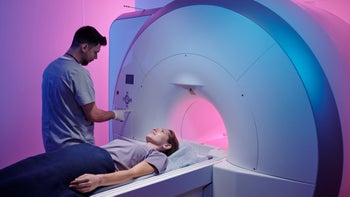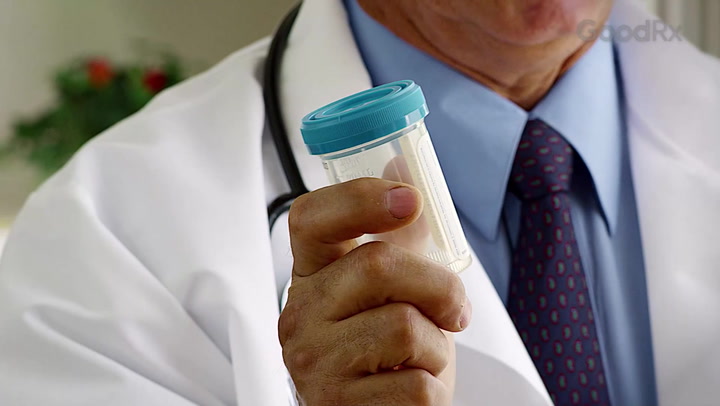
What Does a Positive ANA Test Mean?
Key takeaways:
Positive antinuclear antibodies (ANA) tests are found in about 15% of healthy people and have many different causes.
Positive ANA tests don’t automatically diagnose an autoimmune condition and may not be cause for concern.
In order for a positive ANA test to be concerning for a medical condition, you must have symptoms that fit.
Table of contents

Positive test results can be scary — especially when you aren’t sure what they mean. The good news? Positive test results don’t always mean that something is wrong. No test is perfect. The information they provide isn’t always black and white.
Since tests aren’t perfect, positive results always need to be “interpreted clinically.” In other words, your healthcare professional will need to look at the bigger picture — your symptoms, physical exam findings, and test results — in order to determine if results are meaningful or not.
This is especially true when it comes to the antinuclear antibody (ANA) test. Positive ANA tests are common — even in healthy people — and they have many different causes. We’re here to shed some light on it all.
Search and compare options
What is an ANA test?
In order to understand ANA tests, we need to understand a bit about cells and antibodies first.
Cells are the tiny building blocks that make up the body. Most cells have a nucleus at their center. The nucleus serves as the control center for the cell — it stores your DNA and regulates the activities of the cell. The letter “N” in ANA stands for “nuclear,” which refers to the nucleus of cells.
Antibodies are proteins made by your body’s immune system. They’re designed to attack foreign substances like viruses and bacteria. But sometimes the body accidentally creates antibodies for parts of your body that aren’t foreign. These are called “autoantibodies” because “auto” means “self.”
A positive ANA is an autoantibody to a protein in the nucleus of your cells. Autoantibodies may sometimes lead to autoimmune disease, but not always.
What do ANA test results look like?
ANA tests look for antinuclear antibodies in your blood. The results are reported as ratios called “titers.” These titers look at how much a blood sample can be diluted and still test positive for the antibodies. The higher the number (or the more a sample is diluted), the more ANA is present.
The lowest possible titer is a ratio of 1:40 (or 1 part blood to 40 parts of saline). After that, the numbers double as the blood sample is further diluted: 1:80, 1:160, 1:320, and so on. Most labs and rheumatologists only consider titers of 1:80 or higher as potentially significant since titers of 1:40 are so common (more on this below).
Usure if your rash might be related to an autoimmune condition? Here are some pictures and descriptions of different kinds of autoimmune rashes.
Fatigue can be caused by lifestyle factors, or it can be a sign of an underlying disorder. Check out this review of 16 different reasons you might be feeling tired all the time.
How accurate are lab tests? Lab tests are never 100% accurate, so it’s important to know what they can — and can’t — tell you.
How common are positive ANA tests?
Positive ANA test results are common. About 15% of healthy folks in the U.S. have an ANA titer of 1:80 or higher. This percentage is even higher for ANA titers of only 1:40, which is why they’re considered insignificant. This means that over 50 million people living in the U.S. alone have positive ANA test results.
Of note, it’s a common misconception that a positive ANA test diagnoses lupus — an autoimmune disease that can cause many of the symptoms listed below. But of the more than 50 million people in the U.S. with positive ANA tests, only 1.5 million are living with lupus. So, that math doesn’t quite add up. Keep reading to understand why.
When might a healthcare professional order an ANA test?
Positive ANA test results are a lot more meaningful if you also have symptoms of an autoimmune condition. Symptoms like these could raise concern for an autoimmune condition, and might warrant ANA testing:
Painful, swollen joints
Rashes
Sores inside your mouth or nose
Hair loss, especially near your temples
White/purple color changes in your fingers when exposed to cold (Raynaud’s)
Muscle weakness that makes it hard to walk upstairs or hold your arms over your head
Low blood counts
Fluid or inflammation around your heart or lungs
Severe dry eye requiring eye drops multiple times a day, or feeling a constant sandy/gravel feeling in the eyes
Severe dry mouth such that you can’t eat a salty cracker without a glass of water to help
Abnormal urine tests (urinalysis)
Read more like this
Explore these related articles, suggested for readers like you.
Fatigue alone isn’t a great reason to order an ANA test. That’s because fatigue is common and has many different potential causes. But if fatigue is accompanied by any of the symptoms above, ordering an ANA test might be helpful.
What could a positive ANA test mean?
A positive ANA test could mean absolutely nothing, or it could mean something. Most healthy people make autoantibodies of some sort. When it comes to ANAs, there seems to be a strong link with age and gender. Healthy people are more likely to make ANAs as they get older. And women are more likely to make ANAs than men. The reason for this isn’t entirely clear.
So the meaning of a positive ANA test depends on why the test was sent and what symptoms are present. Ultimately, you and your healthcare professional will determine if the positive ANA test is concerning or not. If your healthcare professional isn’t sure, they may refer you to an autoimmune disease specialist (like a rheumatologist) for help.
Common causes of positive ANA tests include, but aren’t limited to:
Infections (like Hepatitis C, human immunodeficiency virus (HIV), or even the common cold)
Cancer
Hypothyroidism and hyperthyroidism
Medications (like hydralazine and many others)
Autoimmune conditions (like lupus, multiple sclerosis, rheumatoid arthritis, and many others)
Fibromyalgia
No specific reason (remember, 15% of healthy people have positive ANAs)
Can ANA tests be used to ‘screen’ for autoimmune conditions before developing them?
No. Unfortunately, there’s no test that is able to do this just yet. Each autoimmune condition has its own set of symptoms, and symptoms are required for diagnosis (not just positive tests).
Of note, a negative ANA test does indeed rule out lupus. But it doesn’t mean that other autoimmune conditions aren’t possible. People with autoimmune conditions may still have negative ANAs.
If my ANA titer is very high, does that increase the chances of having autoimmune disease?
Maybe. A higher ANA titer does seem to increase the chances of having or developing an autoimmune disease. One study found that people who had ANA titers greater than 1:640 were more likely to be diagnosed with an autoimmune disorder within the next 6 months. But even a high ANA level can’t be used to diagnose an autoimmune disease. This same study found that some healthy people had high ANA levels and no autoimmune issues. So, if the symptoms don’t fit, a higher titer ANA still doesn’t mean much.
What should you do next if you have a positive ANA test?
First, take a deep breath. A positive ANA test doesn’t automatically mean that you have an autoimmune condition — or any type of medical condition for that matter. Next, talk to your healthcare professional about your symptoms. Together, you’ll decide on next best steps, like a referral to a specialist or more testing.
The bottom line
Positive ANA tests are common and have many different causes. They can be found in about 15% of healthy people and may not be a cause for concern. They need to be interpreted in the context of your symptoms, physical exam findings, and other tests. So if you’re alarmed at seeing a positive test, rest assured that this is just one piece of the puzzle. Talk to your healthcare professional about what it means and what next steps are recommended for you.
Why trust our experts?



References
Abeles, A. M., et al. (2013). The clinical utility of a positive antinuclear antibody test result. The American Journal of Medicine.
American College of Rheumatology. (n.d.). Rheumatologist.
Blumenthal, D. E. (2002). Tired, aching, ANA-positive: Does your patient have lupus or fibromyalgia? Cleveland Clinic Journal of Medicine.
Carnago, L. (2023). Antinuclear antibodies (ANA). American College of Rheumatology.
Dinse, G. E., et al. (2021). Increasing prevalence of antinuclear antibodies in the United States. Arthritis and Rheumatology.
Lupus Foundation of America. (2021). Lupus facts and statistics.
Meier, H. C. S., et al. (2020). Sex differences in the association between antinuclear antibody positivity with diabetes and multimorbidity in older adults: Results from the Baltimore Longitudinal Study of Aging. Experimental Gerontology.
Nisihara, R., et al. (2013). Antinuclear antibodies and rheumatoid factor positivity in healthy elderly adults: A cross-sectional study in 336 individuals. Journal of the American Geriatrics Society.
Shome, M., et al. (2022). Serum autoantibodyome reveals that healthy individuals share common autoantibodies. Cell Reports.
Wang, K. Y., et al. (2011). The initial manifestations and final diagnosis of patients with high and low titers of antinuclear antibodies after 6 months of follow-up. Journal of Microbiology, Immunology and Infection.




























